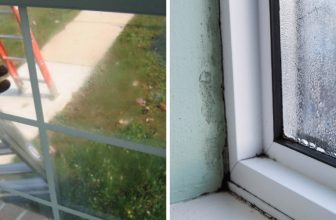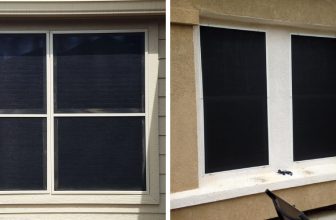How to Stop Rain From Coming Through Window Screen
Introduction:
So you have a leaky window screen. Many people don’t realize that there are steps they can take to prevent rain from coming through the window and flooding your home when it rains. The most important step is to ensure that the sealant on the edges of your windowsills, sash, and trim is weatherproof and fresh.
If not, water will be able to seep in around them as well as through any cracks or holes in your screens (and if you happen to have vinyl or aluminum frames–which many do these days–water can come right into your home). You should also check for any loose nails or screws on the frame that could let air in behind screens and allow rain inside too. For this reason, today, I will discuss a process on how to stop rain from coming through window screen. Let us get started.

What is a Window Screen and how does it Work?
A window screen is a mesh of metal, plastic, or fiberglass stretched over a window opening. Its primary function is to keep insects out while allowing fresh air to flow into your home. However, during heavy rains, water can also seep through the holes in the screen, making it necessary to properly seal and maintain your screens.
You can either purchase window screens pre-made or custom made. Pre-made screens are available in standard sizes and are usually cheaper, while custom made screens offer a perfect fit for your specific window size and shape.
Why Does Water Come Through the Screen?
There are a few reasons why rainwater may be coming through your window screens. One of the main reasons is that the sealant around your windows is not weatherproof or has worn off over time, allowing water to seep in. Additionally, any cracks or holes in the screen itself can also allow water to pass through.
You may also want to check for any loose nails or screws on the frame of your window. If these are not tightly secured, they can create gaps that allow air and water to enter through the screens. The type of window frame you have can also contribute to water coming through the screen. Vinyl and aluminum frames, in particular, tend to allow more water to enter compared to wooden frames.

Needed Materials:
Weatherproof Sealant:
The most important material needed to stop rain from coming through your window screen is a weatherproof sealant. This can be in the form of caulk, silicone, or foam sealant. Be sure to choose one that is specifically designed for outdoor use and can withstand wet conditions.
Screen Patching Kit:
In case there are any holes or tears on your window screen, you will also need a screen patching kit. This usually includes adhesive patches and a rolling tool to properly secure the patch onto the damaged area.
Screwdriver or Hammer:
Depending on how your window screens are attached to the frame, you may need either a screwdriver or hammer to tighten any loose screws or nails. This will help create a tighter seal and prevent water from passing through.

Cleaning Supplies:
Before applying any sealant, it is important to thoroughly clean the surface of your window screens. You can use a mild detergent and warm water for this task. Additionally, have some paper towels or rags on hand to wipe away excess dirt and grime.
Step-wise Guide on How to Stop Rain From Coming Through Window Screen:
1. If you have a metal frame window with a screen door, then first try pushing the window’s fly out a little and taping some plastic cling film along its top edge (the edge that overlaps with the frame). The tape should be just strong enough to hold up against rain pressure, and the plastic film must be wide enough to overlap the fly of the screen by about 3-4 inches all around.
2. Cover your metal frame windows with cloth or roll-up canvas blinds instead of screens if possible. Metal frames may also allow water through their joints and openings when it rains hard, especially if you live in an area where houses are built using galvanized metals.
3. You can buy a storm window with built-in screens for your home to avoid water damage from rain. These windows have a layer of waterproof film that prevents them from being penetrated by droplets and allows the window to remain transparent while staying dry on the inner side.
4. If you can’t buy storm windows, then get “Water Repellant” or “Sealant” solutions designed for household use and apply directly into the flyscreen’s joints and corners (where possible), along with any other openings in metal frames around your home.
5. Consider adding guttering overhangs at both the front and back of your dwelling. Not only does this protect the household from water damage, but it also protects your home’s roof shingles from hailstorms. You may also need to add more downspouts, depending on the size of your house and where it’s located.
6. You can invest in a small or large leaf blower to get rid of any leaves that have accumulated within guttering areas or near downspouts as well. These are easily available at local hardware stores like Home Depot, Lowe’s, and Menards. Note: Do not use leaf blowers while they are plugged into an electrical outlet! The high vibrations can potentially cause injuries to you/yourself or damage to your home.
7. Place your leaf blower on a hard, level surface or plug it into an extension cord/power strip with added support in case it falls over while operating. Always wear safety goggles and ear protection when using this device, as the airflow can inflict harm to human eyes and ears under certain conditions.
8. Try sweeping down any long grass around the perimeter of your house, near guttering areas and downspouts, so that water can’t collect within these areas during heavy rain showers. If there is not enough space for adequate drainage, you may need to remove some of the lawn altogether to make room for larger surfaces that can be used instead (like cement).
9. Invest in water-resistant paint if possible to paint exposed concrete, metal, or wood surfaces around your home. This is a relatively cheap solution and will only add roughly $1-2 to your monthly expenses if you want to stick with low-quality products. Make sure that the paint does not contain toxic chemicals that can harm humans or pets!
Precautions While Learning How to Stop Rain From Coming Through Window Screen:
Avoid using nails or putty to fasten window screens when possible, as they can puncture the screen mesh. Use glazing pins instead. Also, use a sealant or paint to cover exposed nail heads and screw holes on your window frames and trims to keep moisture out of your house. You may want to check with professionals for advice about how much rain you will be able to block with this method. Rainwater may also leak through gaps around the tracks in some types of windows, but these can usually be sealed easily using weather-stripping tape or caulk applied around the edges where the frame meets the sash.

How to Keep Rain From Blowing on Your Porch:
Install An Overhanging Awning:
You can install an overhanging awning to keep the rain off your porch. A good overhang is between 6 and 12 inches. You can buy pre-made wood or aluminum awnings that attach to the house; you might have to purchase new side windows if they don’t offer windows with them, and you might have to make some adjustments to your existing doorway for one of the larger models.
It will provide cover if someone wants to sit on your porch without using your cover or shelter during a rainy situation. If you want more privacy than just from the rain, then another option would be adding lattice around the base of the entryway door and even up to one of the sides. Lattice ceilings are also available.
If your porch is large enough, you can put a table and chairs underneath the overhang. Installing an overhanging awning is easy to do; it’s affordable and will be worth every cent when you go out on your porch on a rainy day! Ensure that the rafters below your eave are not rotted, so there is no danger of them collapsing when they get wet. If needed, reinforce any existing rafters by removing the siding down to the rafters and putting new 4″x4″ wood braces from one end of the support beam to the other. This will help prevent them from sagging or bowing due to rainwater and gravity getting at them.
Screen-In The Porch:
If you don’t want to permanently take down some of your favorite windows during the rainy season, consider buying screens and rolling them up when needed. The screen will attract bugs, but it will keep the rain out. It’s easy to install specially-made retractable screens that have a spring-loaded, telescoping mechanism. You can take them down and put them up with ease! The screens add an airy feeling to your porch, and they go up quickly and easily when you need them. These systems for sliding windows work well if you don’t have many windows or doors on your porch. Make sure you measure the inside of the window opening before you buy a new screen so that it fits correctly.
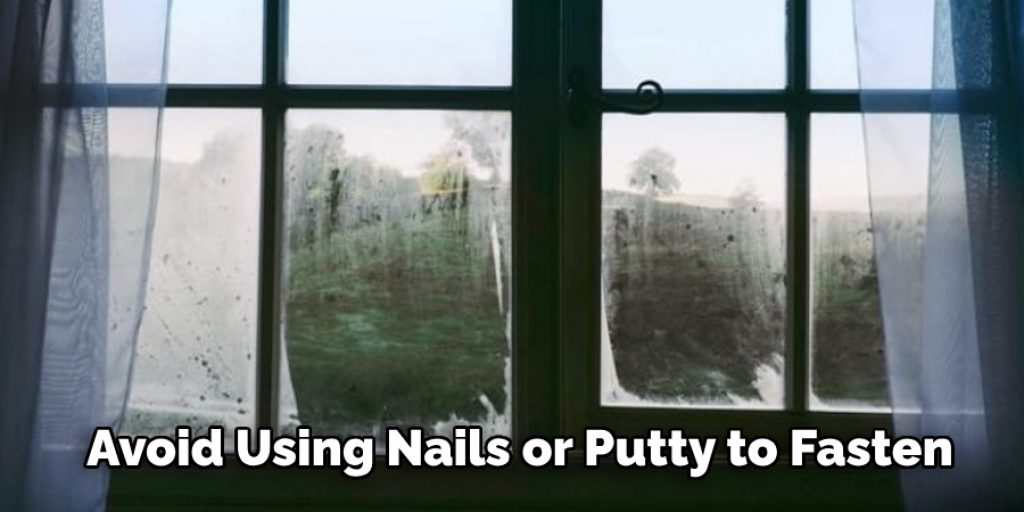
Add Storm Windows:
Storm windows offer added protection for drafty old homes and outbuildings. They help keep the wind and rain out, which means you won’t have to worry about moisture buildup inside your home or building.
If you are replacing all of your windows with new single-pane energy-efficient models, this is going to be an expense that will pay for itself in a few years if you do not have to repair rotting sills or build up mildew in humid environments.
Some brands actually install quickly over your existing window frames, while others require removing the original windows, so make sure you get it right before ordering! If you are renting, check with your landlord first, as many states now have laws prohibiting renters from altering their rental property without permission from the owner/landlord.
Hang Rain Curtains:
If you have an existing porch that has no protection at all, consider hanging rain curtains. You will need to purchase the curtains from a home improvement store or online. The curtain will hook over the edge of your door opening to keep water out and then easily roll back when you want to use your porch in nice weather again.
They are fast and easy and come in sizes that fit most standard-size door openings from 32″ up to 48″.
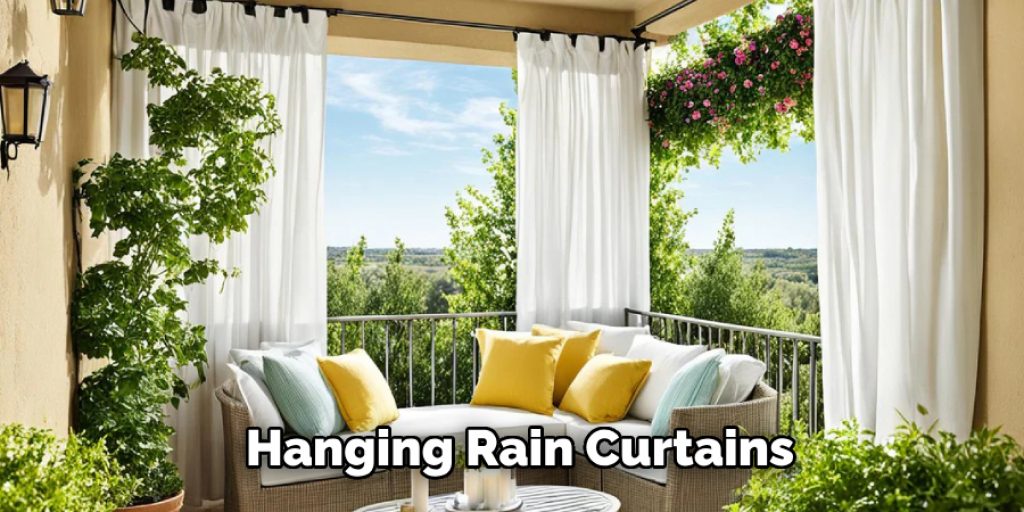
Replace Your Porch Ceiling:
If rain is leaking through your ceiling onto your porch, then it is time for some serious remodeling! However, if it’s just the ceiling on the porch, then you can replace them yourself because they are probably made of tongue and groove boards with a piece of tar paper on top and no insulation.
You should go to a home improvement store or lumber yard and get some new tongue and groove boards. The salespeople can help you pick out the right ones for your ceiling.
It would be best if you could remove your old ceiling so that no water damage has been done to the underlying walls or framing that will have to be replaced as well – but if it’s just too big of a job, then try taping off the area of concern with plastic sheeting so that there is at least one layer between wet, exposed wood, plaster, etc.
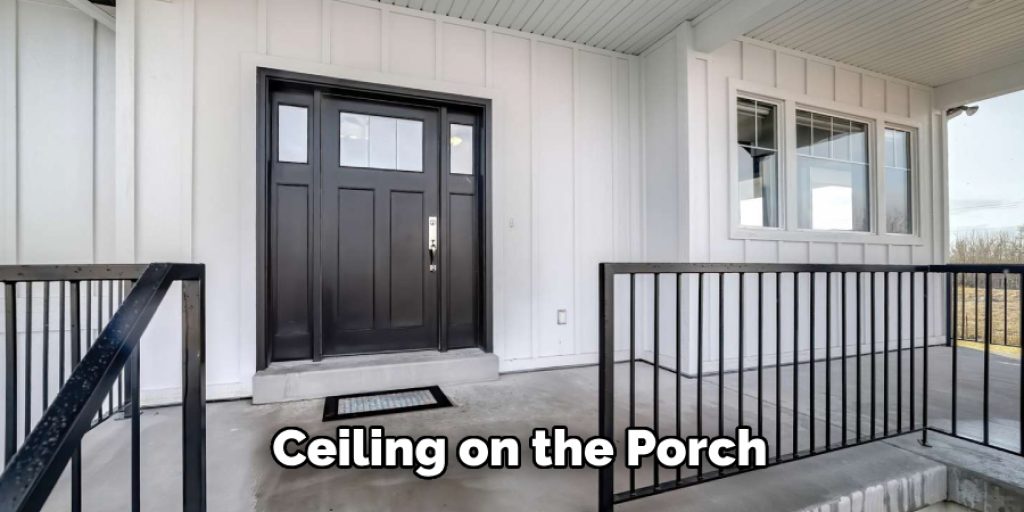
Frequently Asked Questions:
Q: Can I Use Any Kind of Paint to Seal My Window Frames and Trims?
A: It is recommended to use a dedicated sealant or paint specifically designed for windows, as they will provide better protection against moisture. You can also consult a professional for advice on the best product to use for your specific situation. It is also important to properly prepare the surface before painting by cleaning and sanding it. Thoroughly read and follow the instructions on the product for best results.
Q: Will Installing an Overhanging Awning Be Enough to Keep Rain Off My Porch?
A: An overhanging awning can provide some protection from light rain, but it may not be enough to keep your porch completely dry during heavy rainfall. It is important to properly install and reinforce the awning to ensure it can withstand strong winds and heavy rain. Adding lattice or screen curtains can also provide additional protection from rain and privacy. You can also consider adding storm windows for added protection.
Q: How Often Should I Replace My Porch Ceiling?
A: This will depend on the material used for your porch ceiling, as well as the climate and weather conditions in your area. Wood ceilings may need to be replaced every 10-15 years, while vinyl or composite materials can last longer. Regular maintenance and inspections can help determine if your porch ceiling needs to be replaced or repaired.
Q: Can I Install Screens on My Porch Without Removing the Windows?
A: Yes, you can install screens without removing the windows by using specially-made retractable screens that have a spring-loaded telescoping mechanism. These screens can easily roll up when not in use and offer protection from rain and bugs. However, make sure to properly measure the window opening before purchasing screens to ensure they fit correctly. Overall, installing screens can be a great option for adding an airy feeling to your porch while also providing protection from rain and insects.

Q: Can I Install Storm Windows on My Own?
A: While some storm windows can be installed quickly over existing window frames, others may require removing the original windows. It is recommended to consult a professional for proper installation to ensure the best results and avoid any potential damage. Additionally, if you are renting your property, make sure to check with your landlord before making any alterations.
Q: How Can I Protect My Porch from Moisture Buildup?
A: There are various methods to protect your porch from moisture buildup, such as installing storm windows, hanging rain curtains, replacing your porch ceiling, or adding an overhanging awning. Additionally, regularly checking for and repairing any leaks or cracks can also help prevent moisture buildup. Consult a professional for the best option for your specific situation.
Conclusion:
There are some simple and easy ways to keep the rain from coming through your window screens or doors. These methods don’t have to be expensive; just a little creativity goes a long way! I hope you have obtained all the relevant information about how to stop rain from coming through window screen. Ensure proper safety while performing these processes. Thank you and have a nice day!
You may read also –



